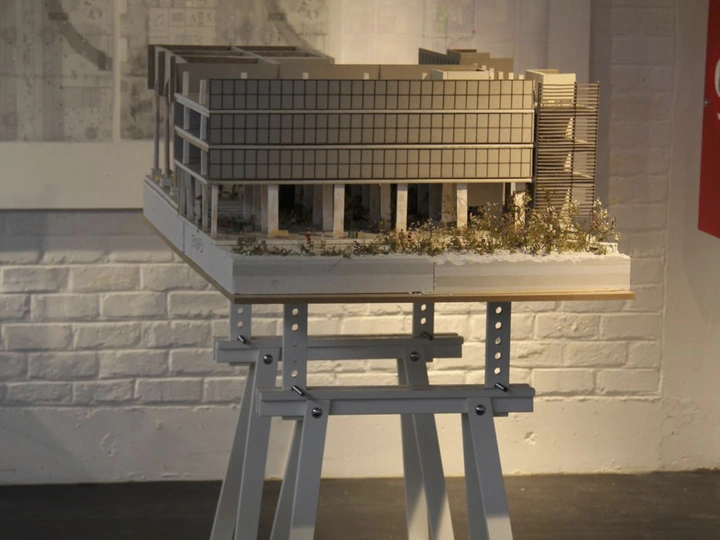Ruining the Ruinous Ruin

Solena Espelt
Nathalie Godon
We are a team of three architecture students at the Faculty of La Cambre Horta in Brussels. Our shared interest lies in an architecture that questions how to accompany transformations of time and the living world, rather than attempting to freeze them. We ask: how can architecture co-evolve with time, decay, and the non-human, to foster the emergence of open and evolving urban and non-urban ecosystems?
We explore alternatives where architecture is no longer an act of addition, but a process of adaptation, strategic erasure, and reappropriation of what already exists.
Our collaboration was born throughout our studies, through shared projects, critical exchanges, and a common vision of architecture. Together, we are developing a methodology based on field investigation, attentive readings of overlooked contexts, working with materials from dismantling processes, and producing critical narratives.
Our project developed in 2023/2024 during our third year of studies—focused on the Quartier Léopold in Brussels, a contemporary ruin made of vacant office buildings and obsolete infrastructure. It allowed us to question the possibility of a “good ruin,” in dialogue with the writings of Anna Tsing, Alexandre Monnin, and Bruce Bégout.
We have presented this work in several academic settings, including the EUMies Young Talent competition, and are now pursuing its rewriting through a more experimental and collective lens.
The Quartier Léopold in Brussels is a contemporary ruin composed of empty offices, deserted public spaces, obsolete technologies, and recent buildings already seen by speculators as ruins in the making. These are ruins without eternity or romanticism both ruinous and ruining in light of current environmental challenges. To dismantle is to reclaim these negative commons, to inventory, consolidate, and care for them to learn to “live in the ruins of capitalism” (Anna L. Tsing, 2015).
Drawing on Alexandre Monnin’s notion of the “good ruin,” the project explores ruin as a tool for urban transformation. Neither a productive yet harmful ruin, nor a passive remnant, the good ruin is seen as a transitional, evolving space open to reappropriation.
Analysis of the district reveals impermeable soils, poor water management, and widespread spatial vacancy. A sensitive reading of the site enables the development of long-term strategies that negotiate with its ruinous condition.
The first focus is the soil. Through urban archaeology and fertility experiments, we created an inventory and mapping of soil types found in parks and beneath pavements. Interventions rely on the selective dismantling of façades and pavement to implement a system for harvesting and redistributing rainwater. This system, made of swales and aqueducts using reused materials, improves water management, enables controlled material decay, and fosters the emergence of evolving landscapes.
The project unfolds in three phases: T0 (initial state), T1 (first interventions), and T2 (in 50 years). These explorations ground the project in a long-term vision where degradation becomes a design tool. The aim is to move from a gridded, monotonous city to an ecosystem shaped by a changing landscape—one that embraces otherness, blurs boundaries, and generates multidimensional public space. A terrain of friction between permanence and obsolescence, where soil transformation and water flow redefine urban uses.